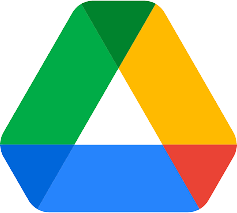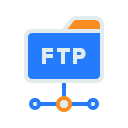🔄 How to Transfer Google Drive Files Between Accounts (5 Proven Methods)
Transferring Google Drive files to another account doesn’t have to be complicated. In this guide, we explore five real-world methods—Google Takeout, Shared Drive Access, Rclone, CloudsLinker, and Alist—so you can choose the one that suits your workflow, tech skills, and file size.
Introduction
Whether you're switching to a new Google account or reorganizing shared resources, moving files between Google Drive accounts can be surprisingly nuanced. Some users need quick one-time exports, while others want full sync or automation. This guide introduces five practical approaches—from Google’s own data tools to advanced command-line utilities and browser-based services. We break down each option, including its pros, ideal use cases, and limitations. No matter your experience level or goal, you’ll find a method here that works for you.
- Method One: Export & Import Using Google Takeout
- Method Two: Share Files Directly Between Google Drive Accounts
- Method Three: Use Rclone to Transfer Between Google Drive Accounts
- Method Four: Use CloudsLinker to Transfer Between Google Drive Accounts
- Method Five: Use Alist to Transfer Files Between Google Drive Accounts
- Comparative Overview of Transfer Methods
- Frequently Asked Questions (FAQ)
- Step‑by‑Step Video Tutorial
Moving files from one Google Drive account to another isn't always as simple as dragging and dropping. Depending on the tools you use, the process can either be smooth or full of friction. In this guide, we explore five different approaches—each tailored to different user habits and technical comfort levels.
Whether you prefer downloading a full archive, syncing files through command-line tools, or using cloud-based transfer services, you’ll find a method that fits. We also introduce options like direct file sharing and lightweight self-hosted gateways, giving you full control over how your data moves across accounts.
There’s no one-size-fits-all solution, but once you understand what each method offers, choosing the right path becomes easy—even for non-technical users.
Method One: Export & Import Using Google Takeout
Step 1: Visit Google Takeout and Select Drive Data
Head to Google Takeout, Google’s official
export platform.
Uncheck all services except Google Drive, then click
All Drive data included to fine-tune which folders you want to export.

Step 2: Choose Export Format and Delivery Method
Select the export frequency (usually Export once) and choose your preferred file
type.
Google typically uses .zip format, which is easy to unpack on any system. For larger
exports, you’ll receive multiple ZIP files.
You can either receive a download link via email or send the files directly to a linked Google Drive account after authorization.

Step 3: Download, Unpack, and Re-Upload (If Needed)
Once the export is complete, you’ll receive an email with a download link. If you exported to OneDrive, the ZIP files will appear in your account automatically.
After downloading or locating the files, unzip them on your device and organize the content in your destination account. For split archives, be sure to download all parts before extracting.
Tip: If you plan to re-upload these files manually to another Google account, you may want to structure folders in advance to avoid confusion.
Method Two: Share Files Directly Between Google Drive Accounts
Step 1: Open the Source Account and Locate the Files
Sign in to your original Google Drive account and navigate to the files or folders you want to share. Right-click on the desired folder or file and select “Share” from the context menu.
You can share individual documents or entire folders. For large-scale organization, it’s recommended to group files into a folder before sharing.

Step 2: Add the Destination Account’s Email
In the sharing popup, enter the email address of your second Google account (the one you want to
access the files from).
Make sure to select Editor as the access level so the target account can organize or
copy files later.
Click Send to finalize the share. The recipient account will now receive an email
notification and see the shared folder under Shared with me.

Step 3: Open the Second Account and Access Shared Files
Now log in to the destination account. Open Google Drive and go to the
Shared with me section.
You’ll see all the folders and files shared from the first account.
To make the content truly your own, right-click the shared folder and choose
Make a copy.
This creates a private duplicate under your My Drive section.
Method Three: Use Rclone to Transfer Between Google Drive Accounts
Step 1: Install and Initialize Rclone
Rclone is a powerful tool that lets you sync files between different cloud services directly. Visit rclone.org to download and install it. Then open your terminal and run:
rclone config
This opens the setup wizard where you’ll define remotes—Rclone’s term for a cloud connection.
Step 2: Set Up Two Google Drive Remotes
Create two remotes (e.g., gdrive1 and gdrive2) representing your source
and destination Google accounts.
You’ll be guided through a browser-based authentication for each.
After setup, check your remotes with:
rclone listremotes
Step 3: Transfer Files Between Accounts
Now transfer your files from one account to another using:
rclone copy gdrive1:/MyFolder gdrive2:/MyFolderCopy --progress
Add a dry-run flag to test the command first:
rclone copy gdrive1:/Docs gdrive2:/DocsBackup --dry-run
Method Four: Use CloudsLinker to Transfer Between Google Drive Accounts
About CloudsLinker:
CloudsLinker is a cloud-based transfer service that connects over 40+
cloud platforms, including Google Drive, Dropbox, OneDrive, and MEGA.
It works entirely online, requiring no downloads, no installations, and no usage of your local
bandwidth.
All transfers are handled directly server-to-server using encrypted OAuth 2.0 authentication,
ensuring a secure and efficient migration.
Step 1: Connect Your First Google Drive Account
Go to CloudsLinker, and click
Add Cloud. Choose Google Drive and sign in using the account you want to transfer files
from.
After completing the OAuth login, the drive will be listed and accessible as a source.

Step 2: Connect the Second Google Drive Account
Add your second Google Drive account in the same way. This account will act as the destination for the transfer. After both drives are connected, you'll be able to select between them freely in the transfer interface.

Step 3: Set Up the Transfer
Head to the Transfer section. Select a source folder from the first Google Drive, and a
destination path under the second account.
You can rename or create folders directly in the interface. Optional features like
filter by file type, exclude rules, and overwrite options are
available for advanced control.

Step 4: Start the Transfer
Click Transfer to begin. The transfer happens in the cloud—so you can even close your
browser.
Check the Task tab for live progress, error logs, and retry attempts. Failed files will
be automatically retried unless manually stopped.
Step 5: Confirm Completion
Once the task status is marked as Completed, log in to your second Google Drive account and
verify the folder contents.
Your files have now been securely and permanently moved—no temporary sharing, no dependency on the
source account.
Method Five: Use Alist to Transfer Files Between Google Drive Accounts
About Alist:
Alist is an open-source web-based tool that allows you to mount and manage cloud storage accounts—such as Google Drive—locally or remotely. It supports multiple accounts simultaneously and gives you a clean UI for operations like copy, move, or sync. By mounting two separate Google Drive accounts, you can move files directly from one to the other with full control.
Step 1: Install Alist
Visit the official Alist website or its GitHub release page to download the latest version. It supports Windows, macOS, and Linux. No compilation is needed—just download, unzip, and you're ready to go.

Step 2: Launch and Log In
Start Alist with:
./alist admin random./alist server
Then visit http://127.0.0.1:5244 in your browser and log in with the admin credentials
generated above.

Step 3: Add Two Google Drive Accounts
In the web interface, go to Manage > Storage, and add your first Google Drive account. Then repeat the process to add your second Google Drive account as a separate storage. Alist will mount both accounts and display them as independent folders. If needed, refer to the Google Drive token guide for setup.

Step 4: Move or Copy Files Between Drives
Once both drives are added, go back to the homepage. You'll see both Google Drive accounts listed. Navigate into the source folder, select the files you wish to move, and click “Move” or “Copy”. Choose the second Google Drive as the target destination.

This process uses the Alist server’s resources—if you installed it locally, the traffic goes through your machine. If you use a remote VPS or NAS, the transfer happens from cloud to cloud without affecting your local bandwidth.
Comparative Overview of Transfer Methods
| Method | Best For | Pros | Cons |
|---|---|---|---|
| Google Takeout | One-time full exports | Official tool, no technical setup, works without third-party services | Slow for large datasets, split archives over 2GB, manual re-upload required |
| Google Drive File Sharing | Quick access without copying | Instant availability, no download/upload needed | Not a real transfer, access can be revoked anytime |
| Rclone | Advanced users with scripting needs | Highly customizable, efficient, supports filters and automation | Command-line interface may be intimidating for beginners |
| CloudsLinker | Fast cloud-to-cloud transfers | No local storage needed, full-featured web interface, supports large files and scheduling | Requires cloud authorization, relies on external service availability |
| Alist | Tech-savvy users who prefer local or VPS-based control | Mount multiple drives, full ownership after transfer, open-source and self-hosted | Setup complexity, OAuth token configuration required |
Frequently Asked Questions (FAQ)
Watch Our Step-by-Step Video Tutorial
Not sure which method suits you best? Watch our comprehensive walk through of the five proven ways to transfer files between Google Drive accounts. This video covers Google Takeout, direct sharing, Rclone setup, CloudsLinker transfers, and Alist self-hosted migration—each shown with real examples.
Whether you prefer visual tools or command-line control, this guide will help you understand the pros, limitations, and setup steps for each approach. Perfect for both beginners and tech-savvy users.
Conclusion
Each method has its role: Google Takeout is ideal for complete exports, Shared Drive is great for seamless access migration, Rclone provides full control for advanced users, Alist adds a self-hosted option for flexibility, and CloudsLinker is perfect for fast, no-install cloud transfers. Match the method to your situation—and if simplicity and speed are priorities, CloudsLinker is the most user-friendly solution.
Online Storage Services Supported by CloudsLinker
Transfer data between over 44 cloud services with CloudsLinker
Didn' t find your cloud service? Be free to contact: [email protected]
Further Reading
Effortless FTP connect to google drive: Transfer Files in 3 Easy Ways
Learn More >
Google Photos to OneDrive: 3 Innovative Transfer Strategies
Learn More >
Google Photos to Proton Drive: 3 Effective Transfer Techniques
Learn More >











































